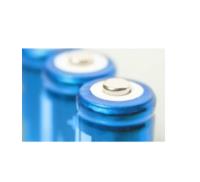 Add My Company
Add My Company
Sign In

Lithium Ion Batteries
History: Pioneer work with the Lithium Ion battery (or li-ion battery) began in 1912 under G.N. Lewis but it was not until the early 1970s that the first non-rechargeable lithium batteries became commercially available. Attempts to develop rechargeable lithium batteries followed in the 1980s, but failed due to safety problems.
Lithium is the lightest of all metals, has the greatest electrochemical potential and provides the largest energy density per weight. Rechargeable batteries using lithium metal anodes (negative electrodes) are capable of providing both high voltage and excellent capacity, resulting in an extraordinary high energy density.
After much research on rechargeable lithium ion batteries during the 1980s, it was found that cycling causes changes on the lithium electrode. These transformations, which are part of normal wear and tear, reduce the thermal stability, causing potential thermal runaway conditions. When this occurs, the cell temperature quickly approaches the melting point of lithium, resulting in a violent reaction called "venting with flame". A large quantity of rechargeable lithium batteries sent to Japan had to be recalled in 1991 after a battery in a mobile phone released flaming gases and inflicted burns to a person's face.
Because of the inherent instability of lithium metal, especially during charging, research shifted to a non-metallic lithium battery using lithium ions. Although slightly lower in energy density than lithium metal, the Li-ion is safe, provided certain precautions are met when charging and discharging. In 1991, the Sony Corporation commercialized the first Li-ion battery. Other manufacturers followed suit. Today, the Lithium-ion Battery is the fastest growing and most promising battery chemistry.
The energy density of the Lithium Ion Battery is typically twice that of the standard Ni-Cd Battery. Improvements in electrode active materials have the potential of increasing the energy density close to three times that of the Ni-Cd. In addition to high capacity, the load characteristics are reasonably good and behave similarly to the Ni-Cd in terms of discharge characteristics (similar shape of discharge profile, but different voltage). The flat discharge curve offers effective utilization of the stored power in a desirable voltage spectrum.
The Li-ion Battery is a low maintenance battery, an advantage that most other chemistries cannot claim. There is no memory and no scheduled cycling is required to prolong the battery's life. In addition, the self-discharge is less than half compared to Ni-Cd and NiMH, making the Li-ion well suited for modern fuel gauge applications.
The high cell voltage of Lithium ion Battery allows the manufacture of battery packs consisting of only one cell. Many of todays mobile phones run on a single cell, an advantage that simplifies battery design. Supply voltages of electronic applications have been heading lower, which in turn requires fewer cells per battery pack. To maintain the same power, however, higher currents are needed. This emphasizes the importance of very low cell resistance to allow unrestricted flow of current.
PMBL can manufacture Lithium Ion batteries from cells by Varta, GP, Saft, Sanyo and many others.
Advantages and Limitations of Lithium Ion Batteries
Advantages
High energy density, potential for yet higher capacities.
Relatively low self-discharge, self-discharge is less than half that of Ni-Cd and NiMH.
Low Maintenance, no periodic discharge is needed; no memory.
Limitations
Requires protection circuit, protection circuit limits voltage and current. Battery is safe if not provoked.
Subject to aging, even if not in use, storing the battery in a cool place and at 40 percent state-of-charge reduces the aging effect.
Moderate discharge current.
Subject to transportation regulations, shipment of larger quantities of Li-ion batteries may be subject to regulatory control. This restriction does not apply to personal carry-on batteries.
Expensive to manufacture, about 40 percent higher in cost than Ni-Cd. Better manufacturing techniques and replacement of rare metals with lower cost alternatives will likely reduce the price.
Not fully mature, changes in metal and chemical combinations affect battery test results, especially with some quick test methods.
How can PMBL help? We can offer expert advice when your designing the design of Custom Lithium Ion Battery Packs to ensure they fit your application.
For more information on Lithium Ion Batteries talk to PMBL Ltd (Batteries)
Enquire Now
More related to Lithium Ion Batteries
List your company on FindTheNeedle.

